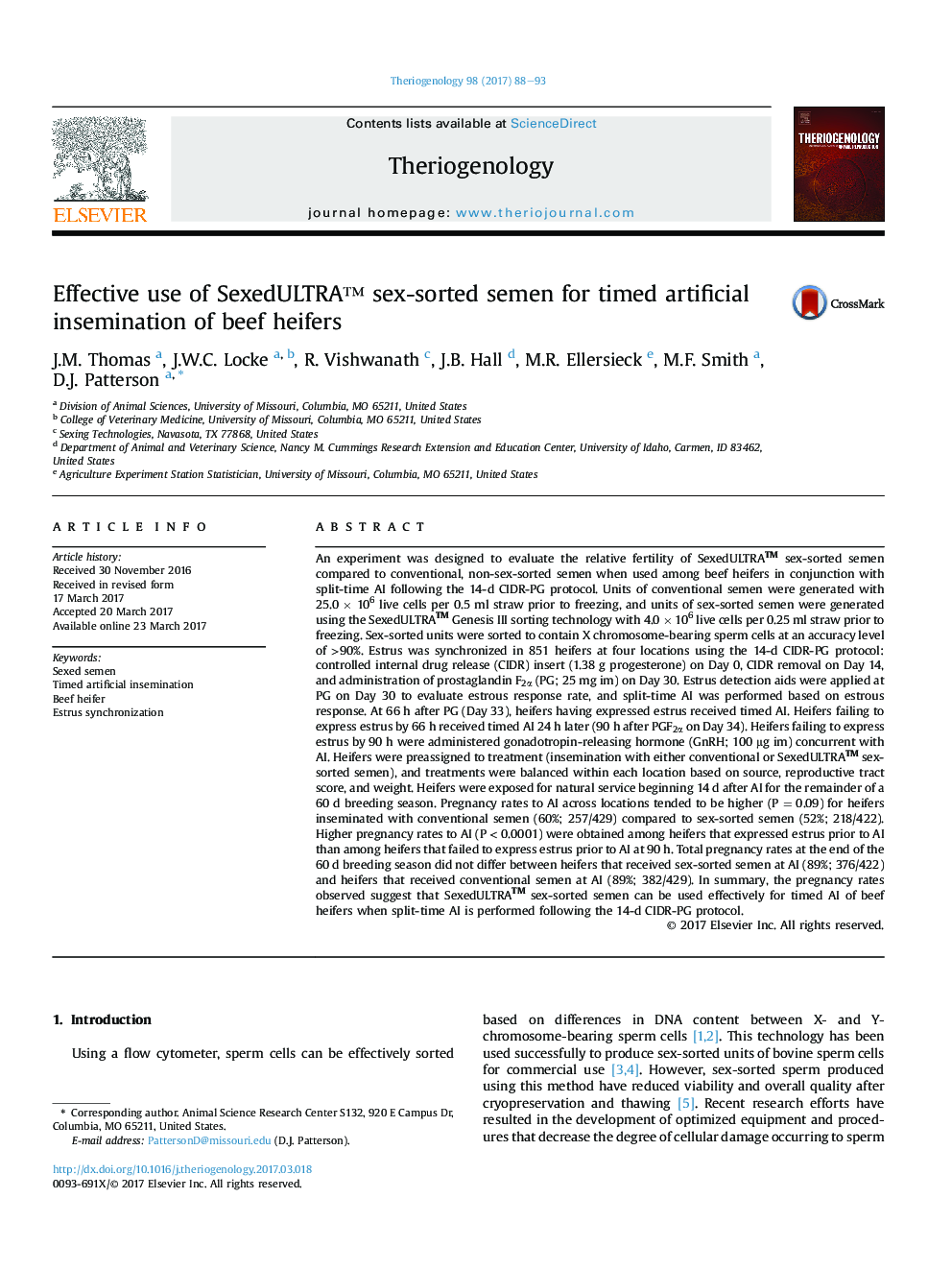| کد مقاله | کد نشریه | سال انتشار | مقاله انگلیسی | نسخه تمام متن |
|---|---|---|---|---|
| 5523075 | 1546071 | 2017 | 6 صفحه PDF | دانلود رایگان |

- Pregnancy rates to timed artificial insemination were compared based on insemination with conventional or SexedULTRA⢠semen.
- Split-time artificial insemination of beef heifers was performed following the 14 day CIDR-PG protocol.
- Pregnancy rates of 52% and 60% were obtained among heifers inseminated with sex-sorted and conventional semen respectively.
An experiment was designed to evaluate the relative fertility of SexedULTRATM sex-sorted semen compared to conventional, non-sex-sorted semen when used among beef heifers in conjunction with split-time AI following the 14-d CIDR-PG protocol. Units of conventional semen were generated with 25.0 Ã 106 live cells per 0.5 ml straw prior to freezing, and units of sex-sorted semen were generated using the SexedULTRATM Genesis III sorting technology with 4.0 Ã 106 live cells per 0.25 ml straw prior to freezing. Sex-sorted units were sorted to contain X chromosome-bearing sperm cells at an accuracy level of >90%. Estrus was synchronized in 851 heifers at four locations using the 14-d CIDR-PG protocol: controlled internal drug release (CIDR) insert (1.38 g progesterone) on Day 0, CIDR removal on Day 14, and administration of prostaglandin F2α (PG; 25 mg im) on Day 30. Estrus detection aids were applied at PG on Day 30 to evaluate estrous response rate, and split-time AI was performed based on estrous response. At 66 h after PG (Day 33), heifers having expressed estrus received timed AI. Heifers failing to express estrus by 66 h received timed AI 24 h later (90 h after PGF2α on Day 34). Heifers failing to express estrus by 90 h were administered gonadotropin-releasing hormone (GnRH; 100 μg im) concurrent with AI. Heifers were preassigned to treatment (insemination with either conventional or SexedULTRATM sex-sorted semen), and treatments were balanced within each location based on source, reproductive tract score, and weight. Heifers were exposed for natural service beginning 14 d after AI for the remainder of a 60 d breeding season. Pregnancy rates to AI across locations tended to be higher (P = 0.09) for heifers inseminated with conventional semen (60%; 257/429) compared to sex-sorted semen (52%; 218/422). Higher pregnancy rates to AI (P < 0.0001) were obtained among heifers that expressed estrus prior to AI than among heifers that failed to express estrus prior to AI at 90 h. Total pregnancy rates at the end of the 60 d breeding season did not differ between heifers that received sex-sorted semen at AI (89%; 376/422) and heifers that received conventional semen at AI (89%; 382/429). In summary, the pregnancy rates observed suggest that SexedULTRATM sex-sorted semen can be used effectively for timed AI of beef heifers when split-time AI is performed following the 14-d CIDR-PG protocol.
Journal: Theriogenology - Volume 98, August 2017, Pages 88-93